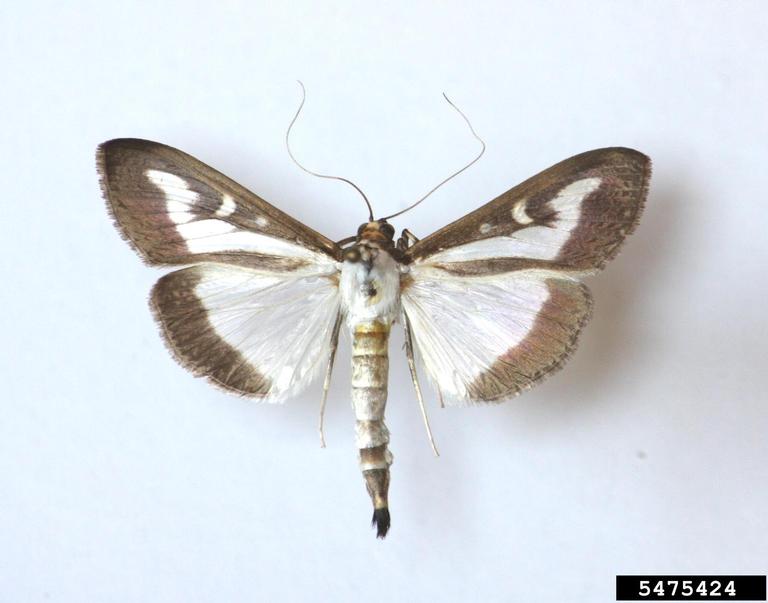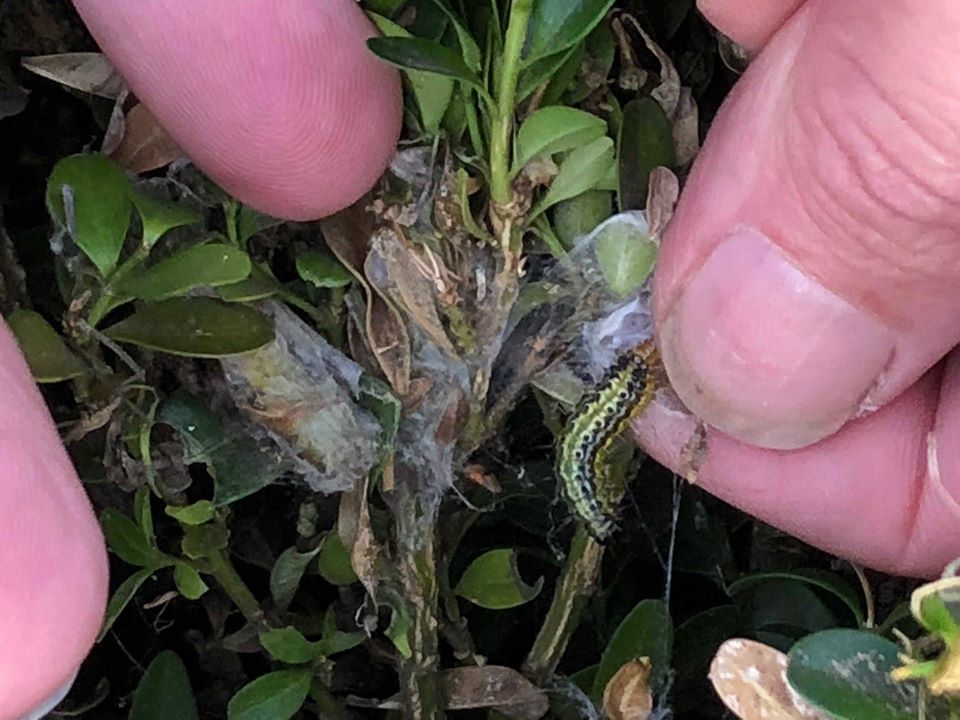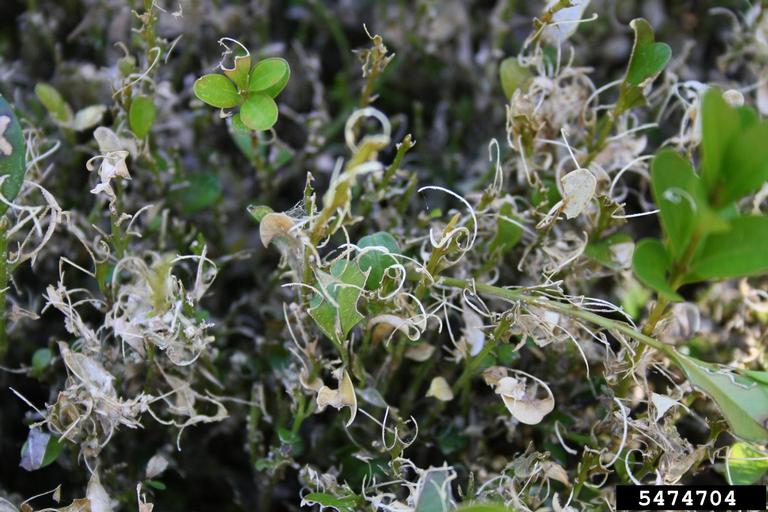Box Tree Moth: Coming Soon to a Boxwood Near You?
A new insect pest, box tree moth, will likely make itself known to the U.S. soon after being found in a few Toronto area landscapes in fall 2018. An online, citizen science group first reported the sightings after a homeowner submitted photos of the pest that were then verified by an entomologist. This marks the first reports of this pest in North America; however, the findings remain unconfirmed by Canadian Food Inspection Agency (CFIA).
How did it get to Canada?
Our story begins in Germany, in the vicinity of a shipping center that receives materials from China. That’s where box tree moth (BTM) was first found in the EU in 2007. The details of BTM introduction to Germany are unknown, but it is most likely linked to importation of infested boxwoods from BTM’s native range, China. Since 2007, it quickly spread to nearly all countries in the EU, mostly through the movement of infested boxwood in the nursery trade; this is the likely explanation of how it made its way to Canada as well.
Not even a polar vortex can slow it down.
No natural predators exist in the EU. Not even birds and other animals will eat the caterpillars, because they contain toxins deemed distasteful. Once introduced to an area, damage to boxwood is severe. In just a few years, large areas of native boxwood trees and forests have been devastated. Between 2009 and 2010, German officials attributed over 90% defoliation in the country’s largest box tree forest to BTM. Boxwood can survive defoliation as long as the caterpillars do not eat bark on the main stems. Once this happens, boxwood lose ability to obtain necessary nutrients and water, while becoming more susceptible to fungal and bacterial infections.
Boxwood garden destroyed by box tree moth. Photo courtesy Bennett Saunders.
Getting to Know BTM
As with many insect pests, the most destructive life stage is larvae, or caterpillars in this case. Damage is caused by larvae feeding on leaves (aesthetic damage) and bark (physiological damage). Infestations are flagged by skeletonized leaves, frass deposits, and webbing created by caterpillars for protection during feeding and pupation. Adults are moths with a wingspan of about 1.5 inches, and wings are either white with a dark brown border or brown with small, white spots.
Box tree larvae and webbing. Photo courtesy Bennett Saunders.
The ideal temperature range for BTM is from 70 – 92° F, but activities are known to occur outside this range. Eggs hatch when temperatures are at least 52° F, and larvae regularly survive winter temperatures below -22° F in parts of China. Not even a polar vortex can slow it down. Depending on temperature and light levels, two to four life cycles per year are common in the EU; each lasts around 45 days.What can we do to protect ourselves?
APHIS has been closely monitoring for the potential introduction of this new pest to the U.S. for over ten years and created new pest response guidelines in preparation. One possible course of action that APHIS could take involves creating a federal order requiring inspection and certification of boxwood entering the U.S. from Canada.
Traps and monitoring programs are other examples. Researchers are unsure how quickly BTM will spread in the U.S. Box tree forests do not exist here; so, less host material may translate to slower or less spread.
Controls are available, including pheromone traps, pyrethroids, chlorantraniliprole, and Bacillus thuringiensis (Bt) products (Xentari, DiPel). Eradication in North America could be a viable option in North America, but only if we, as an industry, are vigilant and stay prepared for any suspicious-looking boxwood damage. Please report anything that even remotely looks like it could be BTM and help protect our boxwoods!
Damage to boxwood from box tree moth. Photo courtesy Ferenc Lakatos.
The Horticultural Research Institute (HRI) continues to monitor BTM as part of its ongoing Boxwood Initiative. Outreach on emerging pests and diseases is another example of how HRI helps the industry stay informed on issues impacting their bottom line.
Product information is in no way a product endorsement. Please consult product registration and label for the most current use information.
Dr. Jill Calabro
Horticultural Research Institute & AmericanHor
Learn more about HRI’s Boxwood Initiative here.
Share This Post










